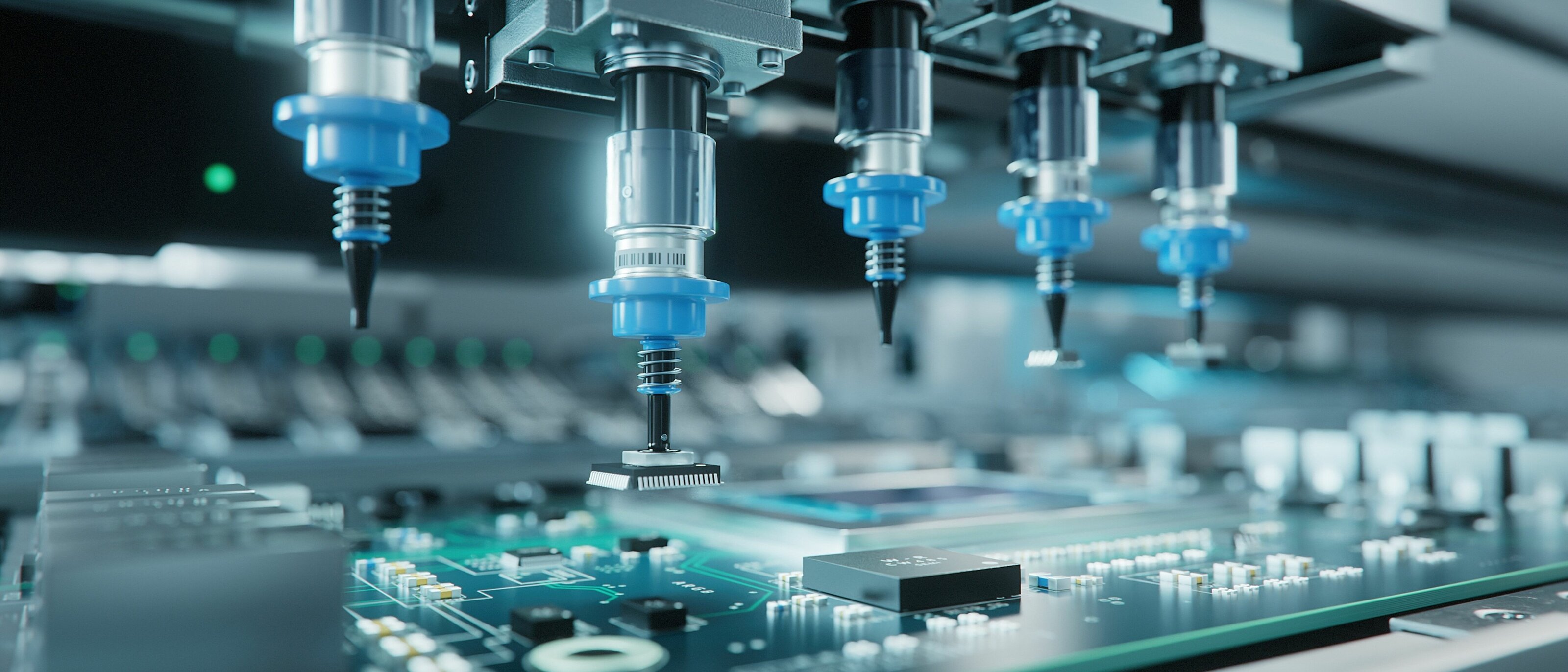Smart IoT solutions with CANopen in the Edge Controller

IoT follows the approach of using new technologies and communication concepts to make data available in a cloud, to link them and to generate further benefits from this data. The most widespread here are data transmission via MQTT or the connection of data to the cloud via OPC UA. Current developments go one step further and consider edge computing as a way of automating and networking processes at the point of action, i.e. where data is generated - in industrial production, directly at the machine.
Why, with which means and methods is it worth going one step further? Should IoT be integrated directly into the device, into a machine part or directly into the sensors and actuators? These questions are answered by Dr. Frank Jungandreas, Senior Engineer at SYS TEC electronic AG and Nadine Mensdorf, Product Manager at SYS TEC electronic AG.
Where do you place CANopen? What does SYS TEC electronic associate with CANopen?
Nadine Mensdorf: CANopen has been established for quite some time as a replacement for proprietary backplane buses within devices. On the market, CANopen can be found, for example, in special purpose machines, in battery management systems, commercial vehicles, in the lift as well as in the mobility sector. Specifically, it connects sensors and actuators in a machine and transmits status values as well as process data or triggers other actions. Just as CAN is used in the automotive sector, CANopen is used in special vehicle superstructures, such as fire trucks, cranes or agricultural machinery.
We as well as our customers have ported our CANopen stack over many years for various controllers and terminals in a wide range of applications. Numerous customer specific developments and manufactured products include our solution. Also in current inquiries and projects, as well as customer solutions we use CANopen. Our product portfolio includes our CANopen chip, the sysWORXX I/O modules based on it, and our industrial controllers. We offer terminal devices for use on DIN rails, embedded control units, as well as customer-specific individual solutions. Among many other protocols, our CANopen implementation is used on all our IoT controllers with IEC 61131-3 PLC programming system for communication in the field level. This applies to the edge controller sysWORXX CTR-700 as well as to the single-chip IoT controller sysWORXX CTR-100.
CANopen and IoT - how do they fit together?
Dr. Frank Jungandreas:The IoT idea is often initially explained with the linking of data and cloud as well as the connection of devices to the cloud through protocols such as MQTT or OPC UA. But how do you effectively get cleaned, pre-processed data that is relevant for evaluation? If you look at a plant as a whole, the data can often be delivered directly to the cloud via its controller. In terms of content, this already brings us to edge computing, i.e., decentralized data acquisition and processing, combined with gateway functionality that serves as an interface to higher-level systems.
According to this approach, a machine in the capital goods sector is still regarded as a self-contained object on a very large scale. Internally, however, its functionality combines several executing and monitoring devices, sensors and actuators. The intelligence for the Internet of Things must begin where the "things" are located - in other words, exactly where data is generated: namely, in the processes of industrial production, i.e., directly in the machine. If we look at the "things" in fine granular terms as machine parts of dedicated functionality, we have to start by providing the objects in the machine with intelligence and linking them with each other.
At the level for networking individual machines in an industrial production, Ethernet-based technologies clearly predominate. All objects are networked via this. In contrast, however, this technology is hardly used within a machine at the fieldbus level. There are many reasons why it often makes more sense to rely on CANopen within a machine instead of using IP-based technologies. On the one hand, the vast majority of microcontrollers used in machine controllers today already have one or more CAN interfaces integrated. The transmission of data via CAN requires significantly less energy than Ethernet-based systems, and there are numerous low-cost tools on the market for commissioning and fault diagnosis.
Just how powerful CAN is can be well illustrated by the example of the automotive industry. Within the vehicle, CAN is used to communicate the status of various components, transmit process data and trigger actions. At the same time, however, CAN provides the service interface to the outside world, via which error information and telemetry data can be read out. CANopen also offers many advantages for use within a machine in the automation sector. Lean, energy-efficient communication units can be used with inexpensively available CANopen.
So CANopen is moving directly into the machines? Please explain this in more detail.
Dr. Frank Jungandreas: Exactly, many machines and devices use CANopen as an internal machine bus without this being visible to the outside. CANopen is significantly slimmer, smaller and even more cost-effective than comparable IP-based communication. In addition, the power dissipation is also significantly lower than with Ethernet, for example. This makes CANopen ideal for autonomous, e.g. battery-powered devices. Applications in this area will continue to grow strongly in the coming years.
Another area of application for CANopen is condition monitoring and predictive maintenance, i.e. the continuous monitoring of device data in order to detect possible failures at an early stage and perform predictive maintenance. Due to the integrated CAN interfaces, the simple cabling and the low energy and computing power requirements, CANopen can be integrated into any location in a machine with little effort. For our customers, a fast and inexpensive realization of intelligent "things" is possible on this basis. The resulting investment in time and money remains manageable and the technological risk is low. Established support tools are also available, for example for diagnostics or configuration.
What does a concrete application example for this scenario look like?
Nadine Mensdorf: Several devices operate within a plant or machine that have to be synchronized with each other. The individual actuators are dependent on each other. To ensure successful cooperation, the devices must be able to exchange information with each other about their process values, such as availability, power requirements and maintenance data. In the area of energy management, for example, power peaks can be distributed so that large consumers are switched on one after the other instead of at the same time, thus significantly reducing the current load of the plant.
CANopen connects sensors and actuators in a targeted manner, it transmits status values, process data and triggers actions. There must be no detached communication unit. Rather, it must be integrated directly into the intelligent sensors and actuators. For example, is a sensor operational, overheated or dirty? What process is affected by the availability of the sensor? Can another sensor take over the task or must the process values of the overall system, such as speed, etc., be adjusted in this case?
Such intelligent assemblies are a must for new machines and systems, as they form the basis for predictive maintenance. A visible trend in the manufacturing industry is toward retrofitting, the retrofitting of intelligent assemblies in existing systems. For machine manufacturers, this opens up new business areas, and for users, it increases investment security - even for existing systems. Machine manufacturers in the special machine construction sector, who currently see themselves as laggards, are beginning to add intelligent assemblies to their machine concepts. Sensor and actuator manufacturers are designing intelligence directly into their devices, which in turn serve as supplements for existing systems.
Do you see retrofit solutions increasingly on the market in the coming years?
Nadine Mensdorf: Of course. The larger the investments in machines, the longer they are typically used. In these areas, the need for additional intelligence will grow even more. Such a retrofit solution must always be considered in its entirety. Let's recall the key data and advantages of CANopen. Intelligent, CANopen-capable devices can be developed in a short time at low hardware costs. The components have a high level of technological maturity and thus bring with them a low technical risk - but also a high potential for generating new lines of business.
Increasing performance and cost pressures demand rapid response and predictive rather than reactive maintenance to generate savings. Innovative technologies are not used for their own sake, but to increase efficiency. The focus here is on uncovering hidden costs. If these can be made visible, it is possible to fix the problems and reduce costs.
How easy an intelligent CANopen device can be realized can be shown in a few moves. Let's take our CANopen chip as a first example. With this plug-on module, analog and digital values can be read in and output in seven available I/O configurations. The device profile for CANopen I/O devices as well as the CANopen communication profile, i.e. the semantics of the unit, are part of the CANopen chip. By integrating the CANopen chip into a control component, this component can already communicate its process data in a semantically defined way.
Let's take our single chip controller, the sysWORXX CTR-100, as a second example. In an intelligent machine part, we only need a simple I/O interface and the CAN transceiver for communication. All the intelligence required to read in process data via CANopen, process it locally and forward it to a cloud via MQTT is already contained in the chip of the sysWORXX CTR-100.
Integrated into a sensor, it has self-diagnostic functions - it can process self-generated values and data as well as environmental data, control them via CANopen, feedback to functionally adjacent units, but also push pre-processed values to a higher-level edge controller via MQTT. Data processing is moving more and more to the edge, i.e., directly to the machine on the store floor - and thus, of course, into the "things. Only through the targeted networking of the individual "things" can useful data be generated. A cloud alone is not enough - the application only becomes a business model when it is fed with appropriate data and this data is linked.
With the sysWORXX CTR-700 edge controller, data can be recorded directly from the field level via CANopen and preprocessed locally. This information can then be forwarded via MQTT or OPC UA and thus transferred directly to a cloud. Of course, other systems can also be connected, for example process control systems that record and analyze the machine data and also visualize it in an appealing way. The data records directly from the machine can be supplemented with additional information. For example, with environmental data to create a picture of the overall situation of a plant. This makes it possible to monitor and control entire plant complexes very efficiently.







